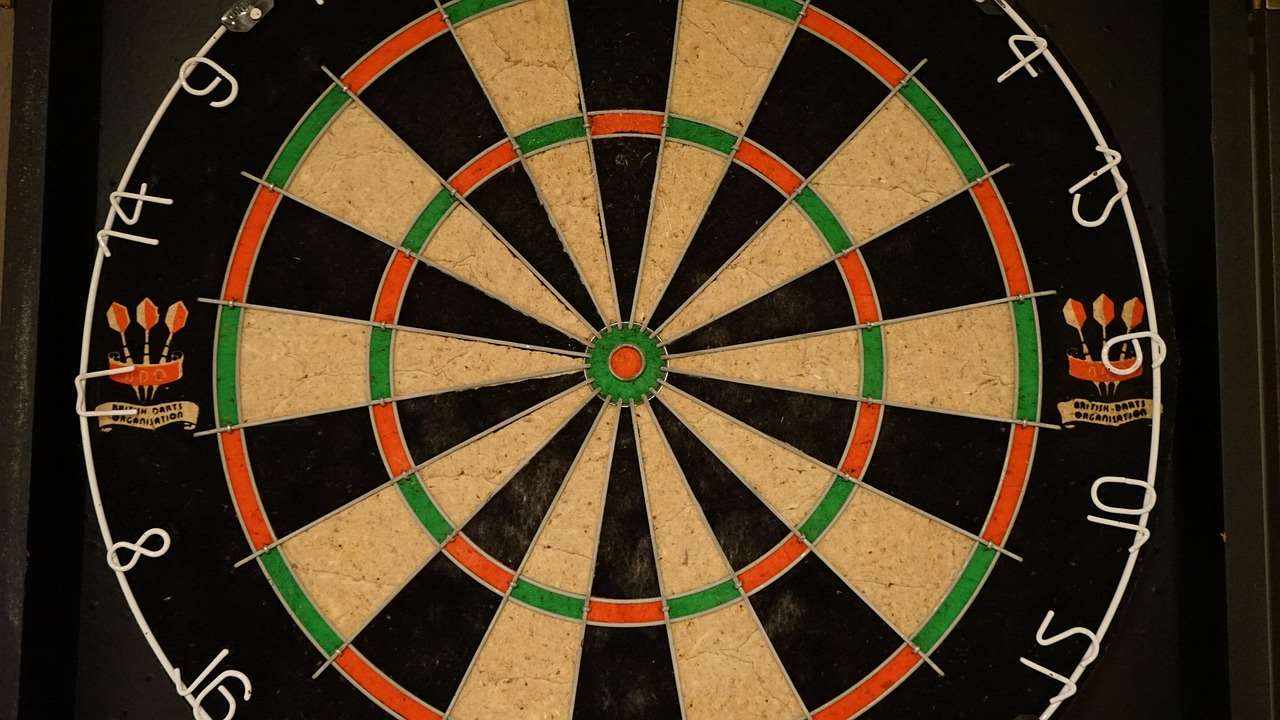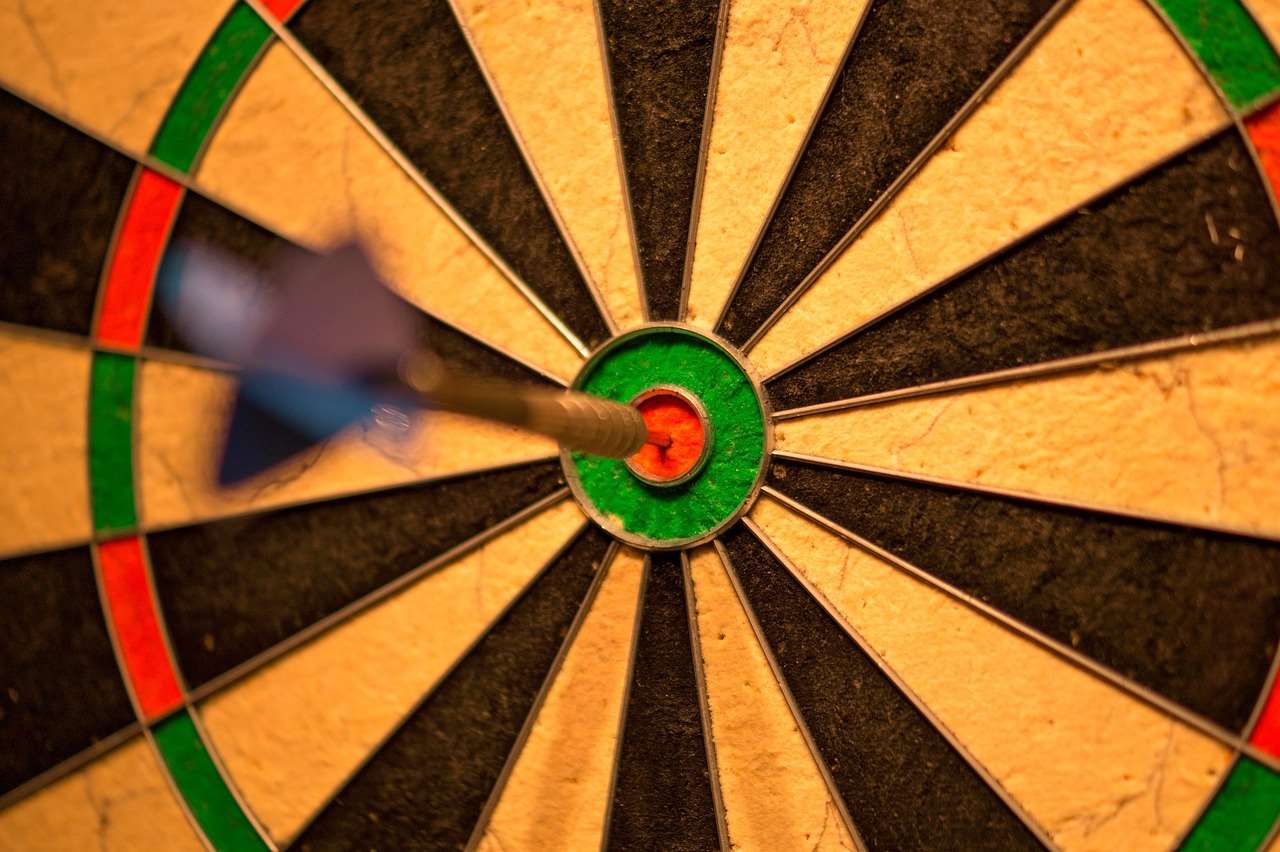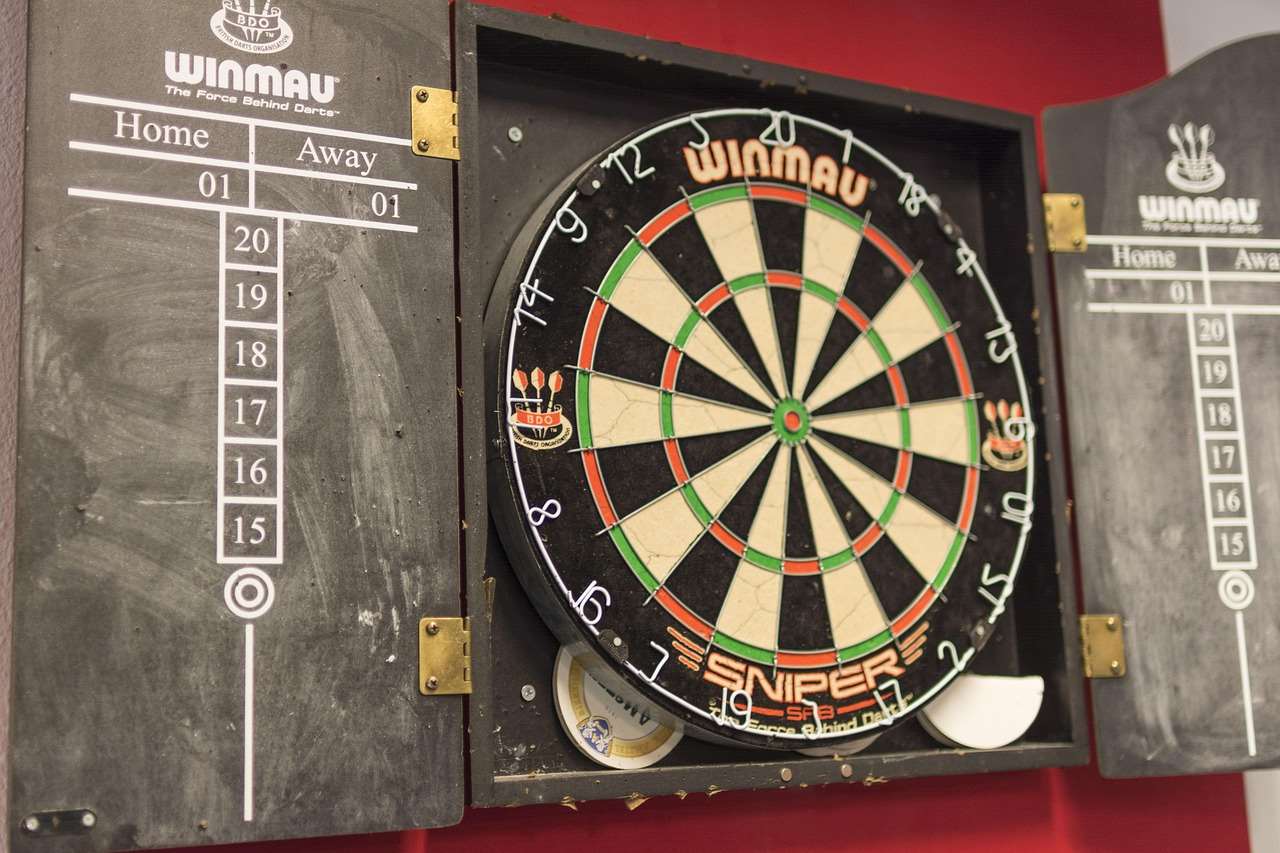Understanding the rules of darts is essential for enjoying this classic game, whether you’re a casual player or aiming for professional status. This article provides a comprehensive guide to playing darts, covering everything from the basic gameplay to scoring, etiquette, and variations.
⚠️ Still Using Pen & Paper (or a Chalkboard)?! ⚠️
Step into the future! The Dart Counter App handles all the scoring, suggests checkouts, and tracks your stats automatically. It's easier than you think!
Try the Smart Dart Counter App FREE!Ready for an upgrade? Click above!
The Core Rules of Darts: Gameplay and Objective
At its heart, the rules of darts are simple. The primary objective in the most common version, 501, is to be the first player to reduce your score from 501 to exactly zero. This must be achieved by hitting specific sections of a circular dartboard, but there’s more to it than just aiming and throwing. Strategic play and a good understanding of the scoring system are crucial for success. It’s more than just hitting the dartboard target.
A standard game of 501 typically involves two players or teams, taking turns throwing three darts per turn. The score obtained in each turn is subtracted from the starting score. The game continues until one player or team reaches zero.

Basic Dartboard Setup and Dimensions
Before diving deeper into the rules of darts, it’s important to understand the dartboard itself. A standard dartboard is divided into various sections, each with a specific point value. The board is typically made of sisal fibers, a durable material that allows the darts to stick easily.
- Height: The center of the bullseye should be exactly 5 feet 8 inches (1.73 meters) from the floor.
- Throwing Distance: The official throwing distance, measured from the front of the dartboard to the oche (throwing line), is 7 feet 9 1/4 inches (2.37 meters).
Understanding the Scoring System in Darts
The scoring system in darts can seem complex at first, but it becomes more intuitive with practice. Each section of the dartboard corresponds to a specific point value. Mastering the scoring system is fundamental to grasping the rules of darts and developing strategic gameplay.
Here’s a breakdown of the key scoring areas:
- Single Numbers: The large sections between the wires are worth the number indicated.
- Double Ring: The outer ring doubles the value of the number it surrounds. Hitting a double is often crucial for finishing a leg.
- Treble Ring: The inner ring triples the value of the number it surrounds. The treble 20 is the highest scoring single area (60 points).
- Bullseye: The outer green ring is worth 25 points (single bull), and the center red circle is worth 50 points (double bull).
Effective darts strategy involves aiming for specific sections to maximize your score and strategically set up your finish. This includes understanding which numbers offer the best opportunities for doubles and trebles.
Specific Rules and Regulations of Darts
While the basic objective is simple, there are specific rules and regulations of darts that govern gameplay, ensuring fairness and consistency. These rules are particularly important in competitive settings.
The ‘Bust’ Rule
One of the most important rules is the “bust” rule. If a player scores more points than they need to reach zero, or if they go below zero, their turn is invalidated, and their score reverts to what it was at the start of that turn. Understanding the darts start and finish time can help manage game strategy.
The ‘Double Out’ Rule
In most professional and many amateur games, the final dart thrown to reach zero must be a double or the bullseye (which counts as a double 25). This is known as the “double out” rule. Mastering the “double out” is a critical skill in competitive darts.
Dart Placement and Retrieval
A dart only counts if it remains in the board until the player has retrieved all three darts or the turn is complete. If a dart falls out before the player retrieves it, it does not score. If a dart touches the wiring and falls out, it doesn’t count. Players should always check their dartboard regularly to ensure it is in good condition, this will help maintain its quality.

Darts Etiquette: The Unspoken Rules
Beyond the official rules, there’s also a set of unwritten darts etiquette principles that contribute to a positive and respectful playing environment. While not strictly enforced, these guidelines are important for maintaining good sportsmanship.
- Avoid Distractions: Refrain from talking or moving around while a player is throwing their darts.
- Respect Your Opponent: Offer encouragement and congratulations, regardless of the outcome.
- Call Your Scores Clearly: Clearly announce your score after each turn to avoid confusion.
- Avoid Standing Too Close: Give the player adequate space to throw without feeling crowded.
Variations on the Rules of Darts
While 501 is the most common format, there are several other popular variations on the rules of darts, each with its own unique scoring system and gameplay objectives.
301
Similar to 501, but players start with a score of 301. This shorter format is often preferred for casual games or when time is limited. The core scoring and “double out” rules remain the same.
Around the Clock (or Killer)
Players must hit each number on the dartboard in sequence, starting with 1 and progressing to 20, then the double and treble of 20, and finally the bullseye. The first player to complete the sequence wins. This variation is excellent for improving accuracy and consistency.
Cricket
Cricket involves scoring on specific numbers (typically 20, 19, 18, 17, 16, 15, and the bullseye). Players must “open” and “close” these numbers by hitting them three times each. Strategic play is crucial in Cricket, as players can score points on open numbers while preventing their opponents from doing the same. Keep up to date when does darts finish tonight.

Tips for Improving Your Darts Game
Mastering the rules of darts is just the first step. To truly excel, you need to focus on improving your technique and strategy. Here are some practical tips to help you elevate your game:
- Consistent Stance: Develop a stable and balanced stance that allows you to maintain consistent throws.
- Grip: Experiment with different grips to find one that feels comfortable and provides good control.
- Throwing Motion: Practice a smooth and controlled throwing motion, focusing on releasing the dart at the same point each time.
- Follow Through: Ensure a complete follow-through after releasing the dart to maintain accuracy and consistency.
- Practice Regularly: Consistent practice is essential for developing muscle memory and improving your overall game. The more you practice dart flights that spin, the better you will get.
- Aiming Strategy: Develop a strategic approach to aiming, focusing on specific sections of the dartboard to maximize your score and set up your finish.
Choosing the Right Darts Equipment
Having the right equipment can also significantly impact your performance. Consider factors such as dart weight, barrel material, shaft length, and flight shape when choosing your darts. Experiment with different combinations to find what works best for you. Choosing from different dart flights difference can affect your trajectory. Consider using an App to score darts

Advanced Strategies for Darts
Once you’ve mastered the basics, you can start exploring more advanced strategies to gain a competitive edge. This includes:
- Out Chart Mastery: Memorizing common out charts (combinations of darts needed to finish on a double) can significantly speed up your game.
- Strategic Blocking: In games like Cricket, learn to strategically block your opponent’s scoring opportunities.
- Mental Game: Develop a strong mental game, focusing on maintaining composure under pressure and staying positive even after setbacks.
Remember that the rules of darts provide the foundation, but strategic thinking and adaptability are key to success at higher levels of play. Focus on refining your skills and developing your own unique style to maximize your potential.

Conclusion: Mastering the Game of Darts
From understanding the rules of darts and the intricacies of scoring to mastering technique and strategy, there’s always something new to learn in this engaging and challenging game. Whether you’re playing casually with friends or striving for professional success, a solid understanding of the fundamentals and a dedication to practice are essential for improving your game.
So, pick up your darts, aim true, and start enjoying the thrill of the game! Keep practicing, refining your strategies, and most importantly, have fun. Now that you understand the rules, go out there and put them into practice. Consider joining a local darts league to further hone your skills and meet fellow enthusiasts. Happy darting!
Hi, I’m Dieter, and I created Dartcounter (Dartcounterapp.com). My motivation wasn’t being a darts expert – quite the opposite! When I first started playing, I loved the game but found keeping accurate scores and tracking stats difficult and distracting.
I figured I couldn’t be the only one struggling with this. So, I decided to build a solution: an easy-to-use application that everyone, no matter their experience level, could use to manage scoring effortlessly.
My goal for Dartcounter was simple: let the app handle the numbers – the scoring, the averages, the stats, even checkout suggestions – so players could focus purely on their throw and enjoying the game. It began as a way to solve my own beginner’s problem, and I’m thrilled it has grown into a helpful tool for the wider darts community.